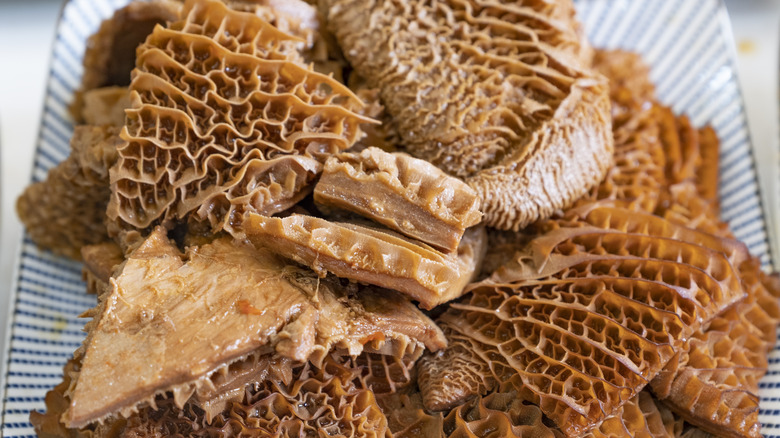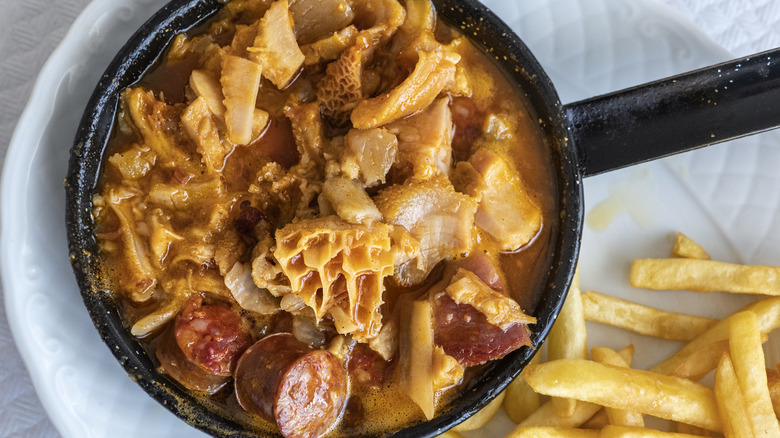What Cut Of Meat Is Tripe?
There are tons of beef cuts to choose from at your local grocery store, accompanied by pork, lamb, and chicken. What's more uncommon, though, is tripe, something many people have heard of but seldom buy unless they're from a culture where its consumption is typical. Unfortunately, where tripe comes from doesn't make it sound very appetizing to those unaccustomed to eating it. You see, tripe is the edible stomach lining, most commonly of ruminants, which are animals with four stomach compartments. While most tripe sold comes from cows, the stomach lining of sheep and goats can also be used, as well as that of pigs.
There are four types of tripe. Blanket tripe, which resembles a solid, bumpy sheet, comes from a ruminant's first stomach compartment. Honeycomb tripe comes from the second stomach compartment and features a honeycomb-like pattern on one side. From the third stomach compartment, there is book tripe, which contains folds resembling a book's pages. Reed tripe is from the fourth stomach, though it is typically used to extract rennet for cheesemaking because of its glandular texture.
Although it may sound unappetizing, tripe is actually a pretty healthy piece of meat. It's high in protein and collagen and packed with important nutrients like zinc, iron, magnesium, phosphorus, calcium, selenium, and vitamin B12. However, it is high in cholesterol and needs to be carefully cleaned before consumption. The USDA inspects all tripe sold in the United States, and most you'll find at the store will be already cleaned, usually in a chlorine solution.
How to cook tripe the correct way
If you've never had tripe and are afraid to try it, don't be. On its own, tripe has a very mild flavor, which makes it perfect for absorbing flavors from other ingredients as it cooks. It's basically a flavor sponge, and there are a ton of things you can do with it, from adding it to soups and stews to braising it with potatoes like a pot roast. The key to cooking fresh tripe is to take things slow because it needs to be cooked for a long time to get tender.
However, before you can start cooking with it, tripe needs to be cleaned appropriately. Fortunately, most of the tripe you find will be pre-cleaned, meaning the lining has been trimmed of fat and bleached. Tripe that is "dressed" like this just needs to be rinsed under cold water to remove excess bleach before cooking. That said, "undressed" tripe will have a brown or green color, and it will need to be scrubbed with rock salt and rinsed in vinegar repeatedly until no residue remains.
Now, if you want to get a taste for tripe before attempting to cook it on your own, there are many cultural delicacies that use tripe, such as menudo, a Mexican soup made with tripe, chilis, and hominy. Tripe is also used in some forms of Chinese dim sum, the Filipino peanut stew kare kare, and trippa alla romana, a Roman-style tripe dish with a white wine tomato sauce. If you can find a restaurant serving any of these dishes near you, don't be afraid to try them! In the words of the great Andrew Zimmern, "if it looks good, eat it!"

